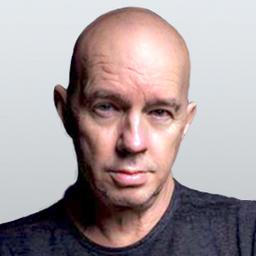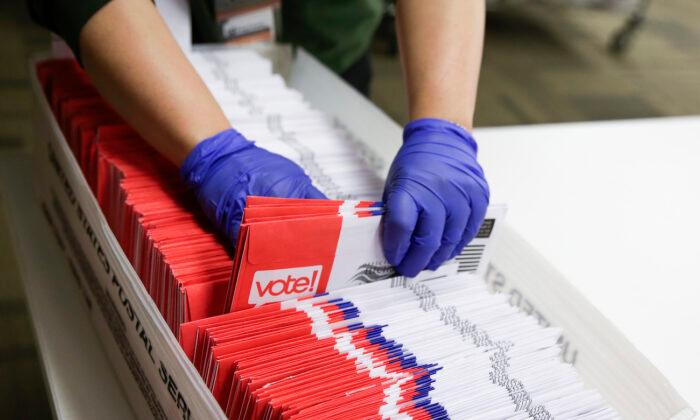CALIFORNIA CITY—California’s precariously out-of-date hybrid power grid can’t handle the state’s growing amounts of solar and wind energy coming online, with system managers already forcing repeated cutbacks in renewables and a continued reliance on conventional energy to keep the grid stable, according to state data.
The shortcomings of the transmission grid, which energy consultants in this bellwether state have warned about for years, raise the prospect that marquee products of the growing battery economy such as electric vehicles—“emission free” on the road—will be recharged mainly from traditional electricity-generating power plants: energy from fossil fuels, some of it from out of state.
Writ large, the transmission problem threatens the zero-carbon future envisioned by green advocates nationwide. “We’re headed toward duplicate systems whose only benefit is to permit the occasional use of ‘clean power,’” said Grant Ellis, an independent electrical engineering consultant in Texas.
So-called “curtailments” of renewable power have become much more frequent for the state’s blackout-prone power grid because the state hasn’t constructed enough transmission lines, transformers, poles, and other infrastructure to keep up. The amount of renewable energy curtailed in California tripled between 2018 and 2021, according to operator statistics.
The state also imported 30 percent of its electric energy last year from other states—9.5 percent of it from coal, most of it from the Intermountain Power Project in Utah.
The curtailments come at a crucial time in what the Biden administration insists is a “transition” from a fossil fuel-driven country to one that relies on renewable energy to save the planet from what believers warn will be a climate-change disaster.
Eric O’Shaughnessy, a renewable energy consultant who has worked with the federally funded Lawrence Berkeley National Laboratory, blames a stalemate between renewable energy providers and electric system operators over who will pay for any infrastructure buildout.
“The system operators say, ‘We need this huge investment, and you are going to have to pay it,’ and the solar developer believes everyone should pay,” O’Shaughnessy said. Then politics comes into play “and that project gets shelved.”
The messy process of connecting solar and wind plants to the grid is made more complicated by a maze of committees, panels, and lawyers that need to weigh in on the specifics of each project.
There is less resistance to building individual solar plants in distinct locations than to transmission lines, often due to the wider geography needed for the latter. And so more solar plants get built while transmission projects languish.
The Energy Department’s advocacy of de-carbonization includes technical reviews by representatives of big solar concerns as well as big oil corporations, most of the latter of whom also are investing in renewables.
The department declined an interview request, but Becca Jones-Albertus, director of its Solar Energy Technologies Office, wrote in an email exchange: “DOE is working to improve transmission through the Better Grid initiative, and there are other tools available now to alleviate the long wait times and costs associated with connecting to the grid.”
Jones-Albertus was referring to the Building a Better Grid program, launched in January as part of $20 billion in federal funding for upgrading and developing transmission nationwide. She did not respond to a question regarding the nation’s longstanding lack of ability to transmit solar and wind energy.
Jones-Albertus also downplayed the necessity of transmission in meeting the current government’s green goals.
Encouraged by green advocates, state and federal lawmakers have plowed money into renewable sectors with grants, tax breaks, loans, and other funding mechanisms while often leaving the “how to” of energy transmission to fend for itself.
This year transmission got more funding, including $2 billion in loans for infrastructure in the Democrats’ newly enacted Inflation Reduction Act.
The recent rush into renewables has created a situation where solar and wind developers can end up with plants that have to wait a minimum of three years before securing approval to sell energy.
“There are a lot of renewable projects waiting in these lines requesting to connect to the system and they are not getting connected,” said Elise Caplan, director of electricity at the American Council on Renewable Energy.
“The vast majority of transmission has been local,” Caplan added. “The U.S. has done a bad job of building these critical larger-scale [projects].” Her group is among a growing number of renewable energy advocates asking the feds to examine the transmission problem at the local level.
Rajat Deb, the LCG consultant, voiced the frustration of green advocates.
“I am an environmentalist in my heart and the biggest problem we have right now is global warming,” he said. “I have been working on this for 40 years and nothing happens. And while they are talking about this, all these [non-governmental agencies] are making money and the state and federal government is spending money. Where is that going?”








